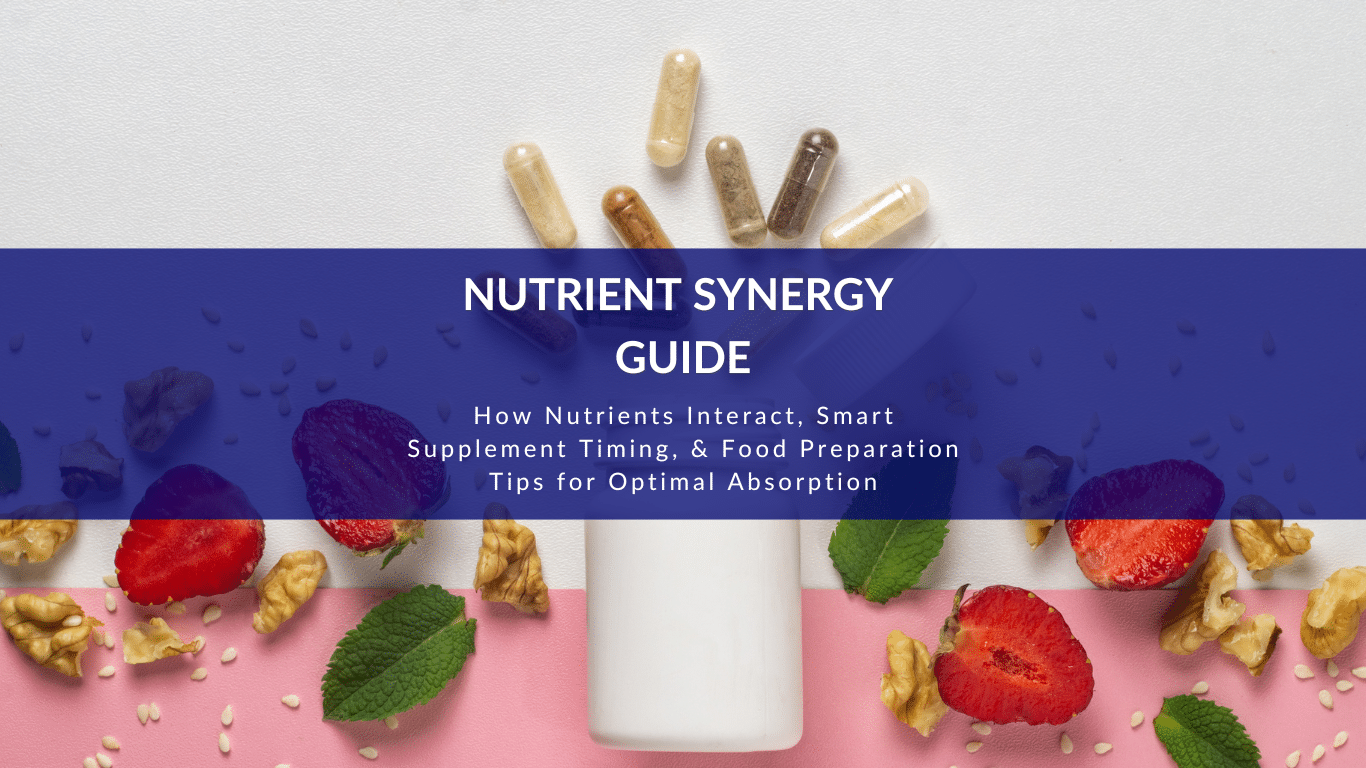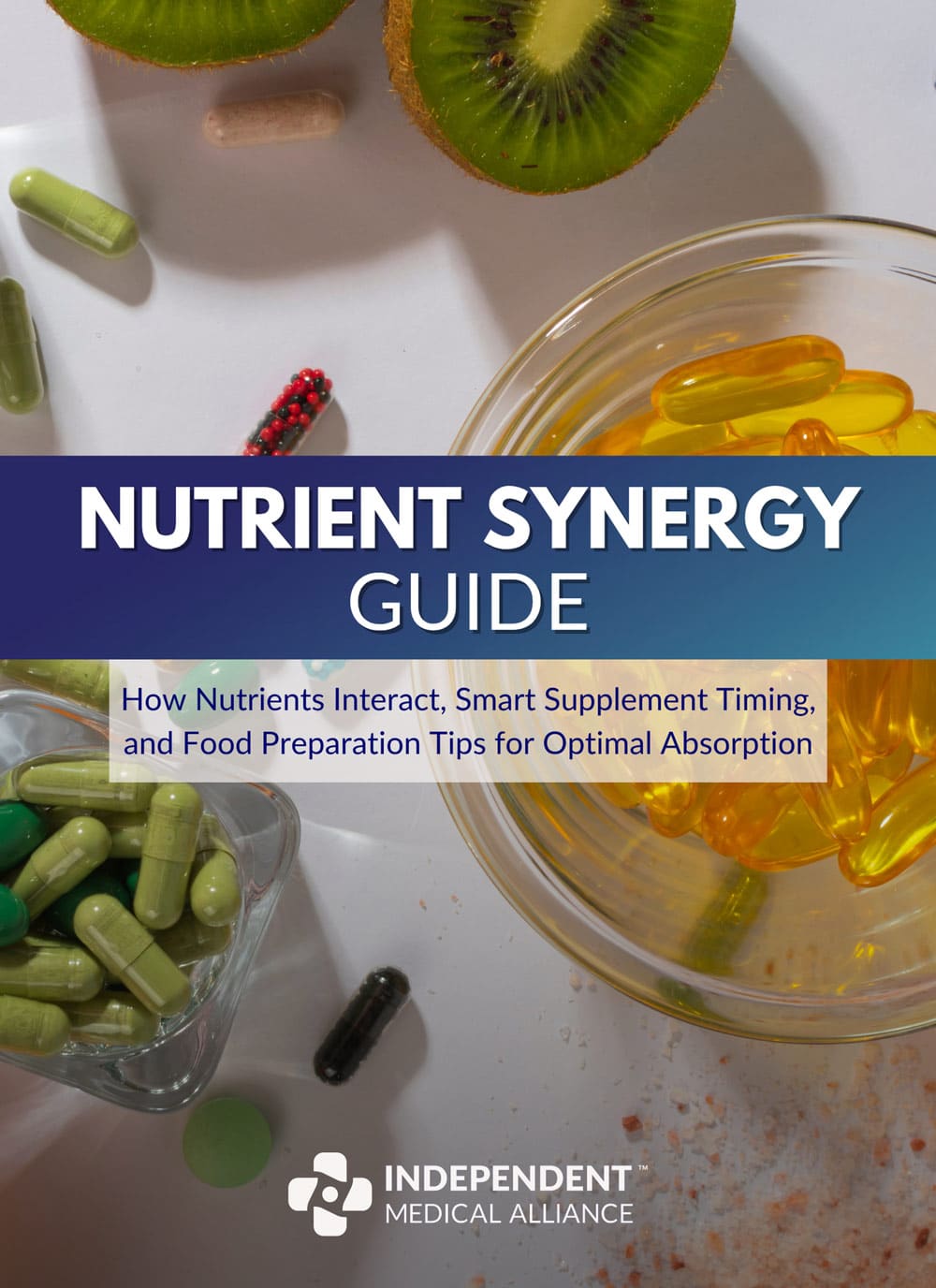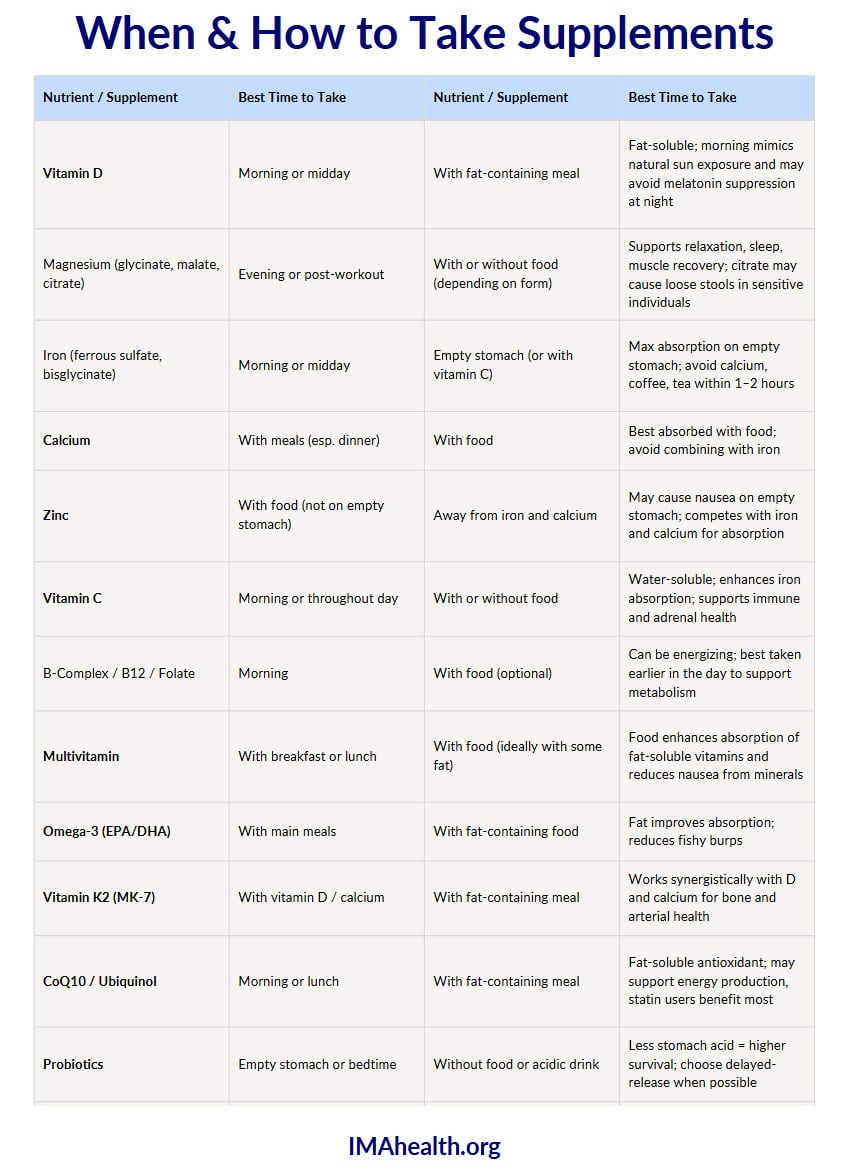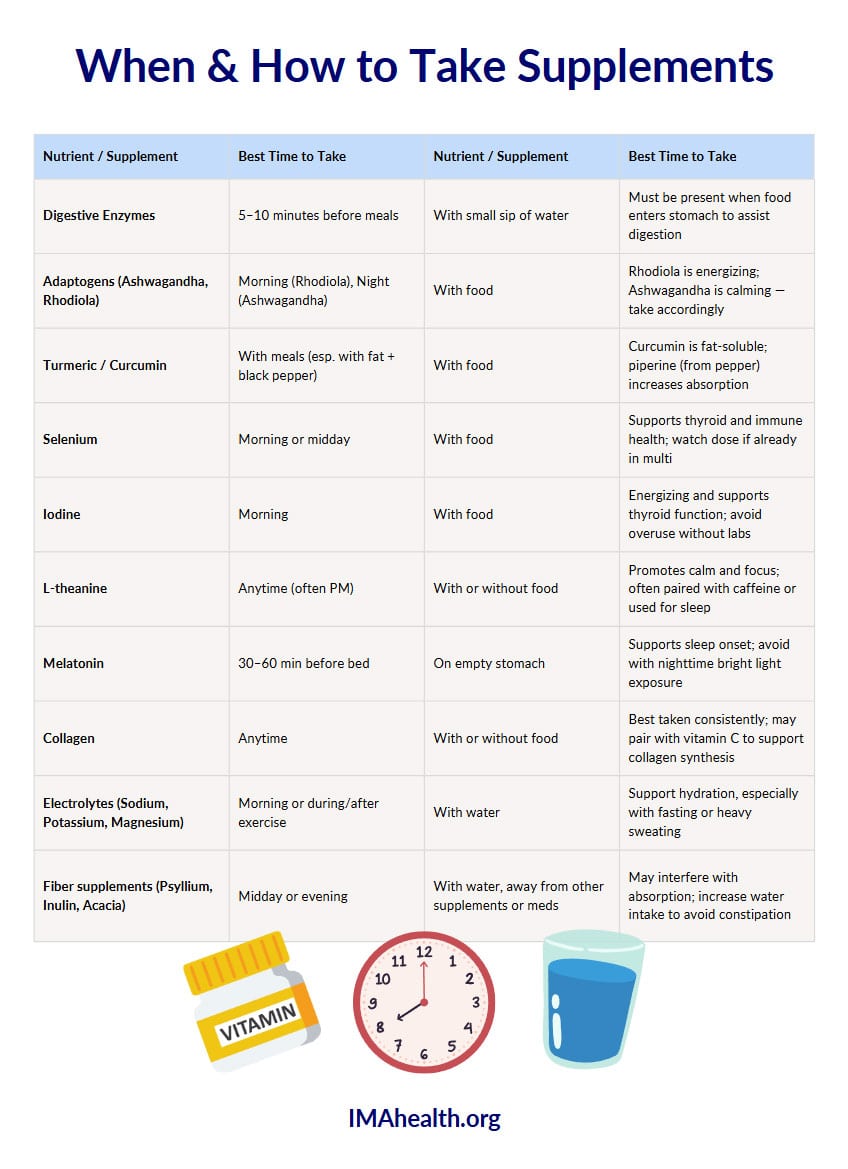Learn how to make your supplements work better with IMA’s Nutrient Synergy Guide by Dr. Kristina Carman. Discover essential pairings, timing tips, and common mistakes.

Trying to make sense of nutrition labels, supplement dosages, and vague multivitamin claims? You’re not alone. Many people take supplements faithfully, but still don’t feel the benefits they expect.
The problem? Most nutrition advice focuses on what you take in—and completely ignores “how” you take it. That’s where nutrient synergy comes in — the idea that vitamins and minerals work together (or against each other), and that timing, form, and gut health play a huge role in whether your body actually absorbs what you’re giving it.
To help make sense of this complex topic, IMA Senior Fellow Dr. Kristina Carman created this clear, practical PDF guide to nutrient synergy. It shows you the key pairings to know, why form and timing matter, and how to make your supplements actually work for you, not against you.
What’s in the Guide:
- ✔️ Foundational Nutrient Synergy Principles
- ⏰ Supplement Timing & Absorption Tips
- ⚖️ Antagonistic Nutrient Interactions to Avoid
- 🧠 Impact of Stress, Gut Health & Medications
- 💊 Daily Sample Supplement Timing Chart
- ✅ Quick-Reference Synergy & Antagonism Tables
Dr. Carman also wrote the article below, which digs even deeper into what makes this approach so effective!
Nutrient Synergy: Why How You Take Supplements Matters Just as Much as What You Take
We often think of nutrition in a linear way—vitamin D for bones, magnesium for sleep, iron for energy. But in truth, nutrients operate less like a checklist and more like a complex orchestra, where timing, balance, and interaction determine whether they play in harmony or go off-key.
That’s the premise behind my new guide. In it, we unpack the science behind how nutrients work together (or compete), why timing and form matter, and how our gut, stress levels, and food quality influence what we actually absorb.
Let’s explore a few highlights that might surprise you—and save you from wasting money on supplements that aren’t doing what you think.
Nutrients Work in Teams, Not Silos
Some nutrients are cofactors—they need each other to be activated or absorbed. For example:
- Vitamin C enhances iron absorption, especially from plant-based sources.
- Magnesium is required to activate vitamin D—but taking both at the same time may hinder absorption in some people.
- Zinc and copper must be balanced—too much of one can deplete the other.
These are known as synergistic or antagonistic relationships, and understanding them can be the difference between a supplement working—and one simply passing through your system.

Timing & Form: The Overlooked Pillars of Supplement Success
Even high-quality supplements can underperform if the timing is off or if they’re taken with conflicting nutrients. A few examples:
- Iron is best taken on an empty stomach—but never with calcium, coffee, or high-fiber meals.
- B vitamins are energizing and better taken in the morning.
- Magnesium is calming—making it ideal at night to support sleep and nervous system regulation.
And then there’s formulation: chelates, liposomal forms, and food-state nutrients often absorb better and cause fewer digestive issues than their cheaper counterparts.
The Truth About Anti-Nutrients
You may have heard warnings about oxalates in spinach or phytates in grains. While these anti-nutrients can bind to minerals and reduce absorption, they’re also rich in antioxidants, prebiotics, and protective compounds.
Rather than fear foods like kale, lentils, or almonds, we need to prepare them properly—through soaking, sprouting, fermenting, or cooking—and rotate them to avoid overexposure. A healthy gut microbiome also plays a critical role in neutralizing these compounds.
Takeaway: We’re Overfed, But Undernourished
Most people aren’t suffering from a lack of food—but from a lack of real nourishment.
We’re eating plenty of calories, but not enough nutrient-dense, whole foods. That’s a major contributor to:
- Rising rates of obesity
- Insulin resistance
- Low energy, depression, anxiety
- Autoimmune and inflammatory conditions
The solution?
- ✅ Start with real food.
- ✅ Understand your unique needs (age, stress, diet, lifestyle).
- ✅ Supplement smartly, not excessively.
- ✅ Learn how nutrients work together to support your whole system.

Gut Health & Stress: Your Hidden Nutrient Filters
You can eat the best diet and take the most expensive supplements—but if you’re stressed, inflamed, or have poor gut function, you may not absorb them well.
- Stress depletes magnesium, vitamin C, and B vitamins
- Low stomach acid impairs protein and mineral absorption
- Gut imbalances like SIBO or dysbiosis interfere with digestion and nutrient uptake
Supporting gut health and nervous system balance is the foundation of any effective nutrient strategy.
Final Thoughts: It’s Time to Rethink How We Nourish Ourselves
We’re living in a time of paradox—overfed, yet undernourished. Supplements can help, but only when used with intention and understanding.
That’s why I created this guide—not to add more rules or restrictions, but to simplify and clarify how to get the most out of what you’re already doing.







